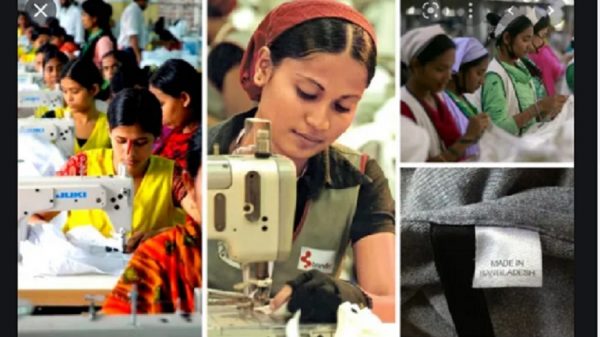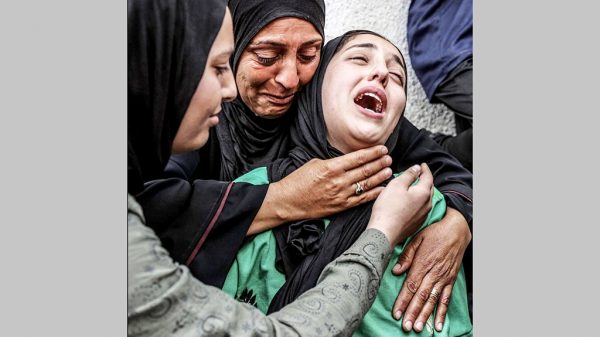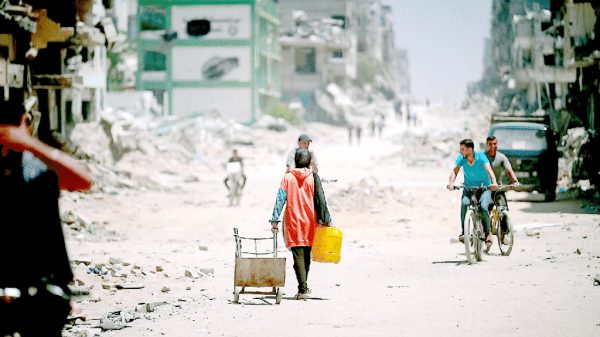Women Empowerment in India and Bangladesh

Sumi Khan :
Empowerment of vulnerable sections of the Indian society have a common denomination – women. No community can be considered truly empowered unless the women of that particular community have the freedom and the agency to express themselves, devoid of the dominance of men. Though every government has attempted to push the agenda of women empowerment, the need for deep rooted societal changes often drives a wedge in the successful achievement of objectives.
Nevertheless, as a country, India seems determined to elevate the status of its women.
If we look at Bangladesh, the AL-led govt has also taken many steps to empower women, as they act as force multiplier contributing significantly in economic prosperity of the country. Bangladesh has been a role model for women’s empowerment in the past decade, and consequently the society has experienced a positive change because of the efforts made in this regard.
In the year 2015, at the Independence Day address from the ramparts of the Red Fort, the Prime Minister of India had made a vocal pitch about the impending task of empowering women in the country. Subsequently, the Union Government embarked on several measures to better the condition of women across different segments of society. Not only numerous schemes were introduced, women were encouraged towards excellence in various fields and role models were duly celebrated.
Interestingly, the recent revamp of the Union Cabinet and the inclusion of a record number of women within the same have proven that there is immense trust that the government and the nation reposes in women as leaders. No other Union Cabinet in Independent India’s history has witnessed as many women as the current one, which in itself is a benchmark that ought to be welcomed by all.
In the 11th Jatiyo Sansad, 22 women were directly elected from amongst the 300 constituencies, with another 50 seats reserved for women in 350 member strong Parliament. The total percentage of female representatives therefore stands at 20.3%. Hon’ ble Prime Minister Sk Hasina is leading the country to achieve new heights, while Speaker of the National Parliament, Opposition Leader and at least four Members in the Cabinet are women. Many women are appointed in the Armed Forces (Army, Navy & Air Force), police forces and different cadre services.
There are several other steps too that have been taken over the last half a decade, that have directly ameliorated the situation of women. On the social front, the Government of India has taken positive steps towards ensuring that the societal condition of women in India changes for the better. Taking a cue from the historic judgment of the Constitution Bench in the Shayara Bano case wherein the practice of triple talaq was deemed manifestly arbitrary, the Government of India enacted a law abolishing the practice. In fact, it has been deemed a cognisable and non-bailable offence wherein the law prescribes a three-year jail term and penalty provisions for a man divorcing his wife through triple talaq. Additionally, there is a need to approach the victim and record her narration of events before considering the bail application of the accused.
On the economic forefront too, things have improved for the better. Through amendments to an existing law, women have been allowed to work in night shifts in metropolitan cities, thereby increasing the scope of their opportunities. Further, to increase their access to financial capital, the Stand Up India scheme possesses a provision of enabling every Bank branch to grant a loan of Rs. 10 lakh to Rs. 1 crore to women only. With regard to small businesses, an overwhelming majority i.e. around 70% of beneficiaries of the MUDRA scheme have been women who have gained access to loans between Rs. 50,000 to Rs. 10 lakh. Also, PSUs have been mandatorily tasked to procure at least 3% of their required products from women-led or women-established MSMEs. This has led to a clear spike in the presence of women in the Micro, Small and Medium Enterprises (MSME) sector wherein more than 32,000 women entrepreneurs registered on the Government e-Marketplace (GeM) within few months of its announcement, and the number seems to be constantly rising.
In Bangladesh, although women constitute half of the population, women’s labour force participation rate is only 36.4 per cent compared with 84.0 per cent for men in 2020. Women’s participation in formal labour force is rising (e.g. in RMG industry), but huge gender inequalities continue to persist in the labour market in Bangladesh. In Bangladesh, about 4 million women are contributing a lot in Readymade Garments (RMG) sector, with Ministry of Labor and Employment having trained 10,800 female garments workers. Bangladesh Bank has provided collateral free loan up to Tk. 2.5 million for women entrepreneurs while Small and Medium Enterprises (SME) disbursed Tk 3939 crore to the women entrepreneurs. On the Education front, about 7.81 million poor students are getting stipend that reduced dropout of which 50.4% are girls. Tk 8802 million was distributed as stipend among the students from class ix to degree level, of which 75% are female.
According to the “Global Gender Gap Report 2018” published by the World Economic Forum (WEF), Bangladesh has closed over 72% of its overall gender gap, retaining its topmost position among the South Asian countries in ensuring gender equality. At present all the ministries adopted gender responsive budgeting and are made accountable towards spending their allocation for economic and social empowerment of women.
More significant steps, however, have been taken in the arena of healthcare as well as access to opportunities in the armed forces. Something that was deemed almost impossible in the past, the opening up of Permanent Commission in all three wings of the armed forces for women will be remembered as a historic step towards ensuring gender parity in a segment that is mostly considered masculine by its very nature. This important milestone has the potential to be a huge shot in the arm for women and the allies of women movements in the country.
Similarly, the seemingly small step of increasing the maternity leave for women from 12 to 26 weeks is a giant leap for our society to facilitate the conditions of working women. It helps women remain part of the workforce despite their responsibilities of child bearing and child rearing towards society. With regard to the latter, the Government has also sanctioned building creches in every government office as part of its vision to make workspaces more gender friendly. Further, an amount of Rs. 7000 crores has been allocated for running a nutrition campaign specifically for women every year. Under this initiative, more than 94 lakh women have been successfully vaccinated against infectious diseases including Covid 19 and the sale of sanitary napkins at a token rate of Rs. 1 has been conducted through numerous Central Government Health Scheme (CGHS) healthcare centers, spread all across the country.
A nation is only as secure as the women of that country. To significantly improve the element of safety and security of women, the Government of India has embarked on an ambitious project of creating a national database to identify perpetrators of crimes against women at the earliest possible instance. In furtherance of the same, panic buttons with GPS technology have been made mandatory in all cabs under the new Vehicle Policy. Special fast-track courts have also been setup for the trial of cases relating to crime against women with significant amendments being made to the Criminal Law provisions that would serve as a deterrent to those engaging in ghastly acts that affect women and their right to live with dignity. While these measures continue to be undertaken, through the use of technology, safe city projects are being initiated in many metropolitan cities. An alert and vigil police force with more women officers is also in the offing.
Overall, in a population of more than a billion people where women constitute roughly about half the total strength, it can be said that consolidated efforts are being made to enable the country’s women function as equal beings, as citizens in their own right in the nation’s path to development. With schemes like the ‘Beti Bachao, Beti Padhao’,
India is striving hard to save the lives of its girl children and protect & enrich them with all its resources. Nowhere is this better reflected than when one looks at the number of young girls who have won medals for the country, be it the International Championships or the just completed Olympics. Slowly this realization is dawning in a new India and Bangladesh that only when society begins to treat its girls with pride, can the nation realize its full potential. Touching upon all aspects of life through various schemes and initiatives, it does seem like a positive beginning has been made in this long walk to freedom.




























Leave a Reply